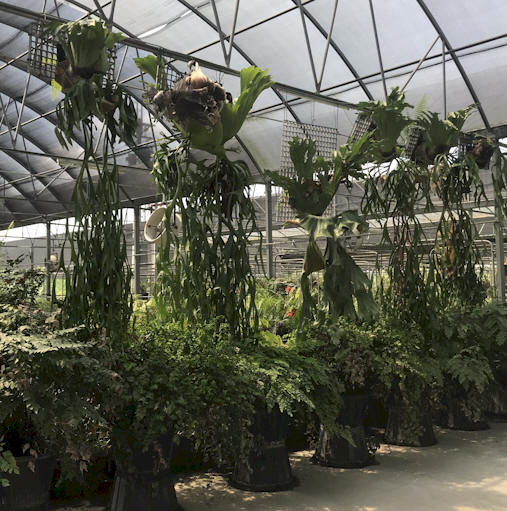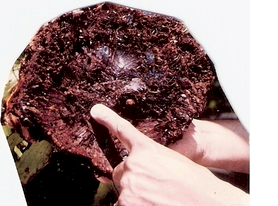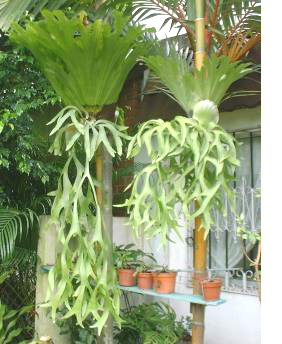
PLATYCERIUM CORONARIUM
P. coronarium, (cor-o-NAR-i-um) which means crown, describing the shape of the mature mass of shields. Shield fronds are highly lobed and very thick and corky. Fertile fronds form a long and twisted mass, with spore patches on the underside of kidney-shaped lobes. There of reports of fertile fronds being extremely wide and other reports with extremely narrow fertile fronds as shown here. This is a bit of a misnomer as the fertile fronds do not have spore patches, they have spore pods. It has been reported that the spore patches tend to fall off in a large patch. It is not known the reason for this habit as is would seem single spores would be more easily carried by the wind like other platycerium species. P. coronarium can be a difficult plant to grow in America, however I understand that when established it tends to be a tough plant that will live for along time if not over watered*. In cool temperature locals, it is best to let the plant dry out in anticipation of colder temps and it will tolerate the cold better. In Taiwan and Malaysia they grow in very high humidity and the temperature never drops below 80 degrees. |
||||
|
|
||||
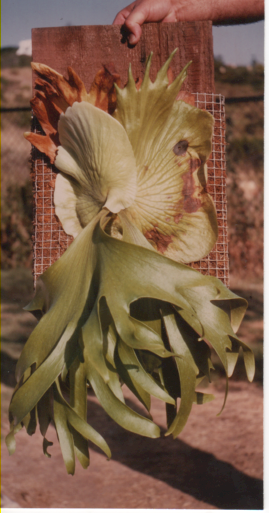 This photo (right) from Roy Vail illustrates the wide fertile frond version of the P. coronarium. The shield fronds are light green and show protruding veins. This platy appears young and may develop different characteristics as it matures. Frequently the shield fronds are a light green in color when compared to the fertile fronds. They are also waxy in appearance. The margin around the bud is turned back and ruffled.
|
||||
|
||||
|
|
||||
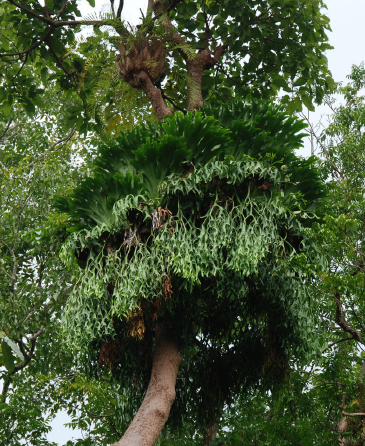
The photo on the right illustrates how the P. coronarium form rings around it's host tree. With the lobed shield fronds, they tend to resemble a crown. Thus the name P. coronarium.
There are reports of a dwarf P. coronarium, however there is little agreement about its traits and the smaller versions may be a result of its growing environment. Jack Wood reports that the smaller P. coronarium in Malaysia could only catch small debris in the shield fronds and tended to be smaller plants. The photo above from Phuket, Thailand might be considered a dwarf compared to those found at Koo Botanical Conservation Center, Taiwan. But they are quite large for a dwarfed version.
|
||||
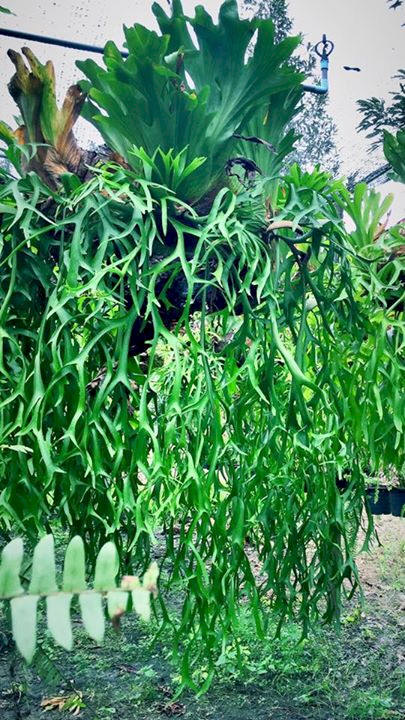
A beautiful P. coronarium from Facebook and
This subject has narrow fertile fronds. There are
reports of P. coronarium |
||||
|
|
||||
|
* Over watering may be interpreted as over chlorinating as illustrated
in my water test. My experience in
Thailand, Malaysia, and Singapore where P. coronariums are
common, there are frequent rain showers with high humidity so the
plants never dry out. |
||||
|
[
Plant Glossary ] |
||||
|
|
